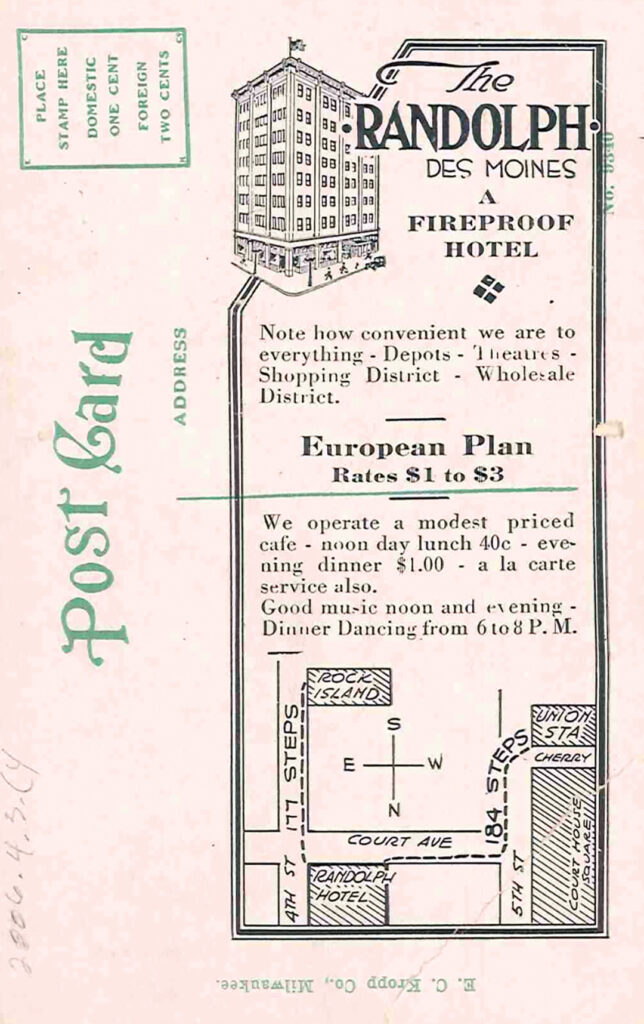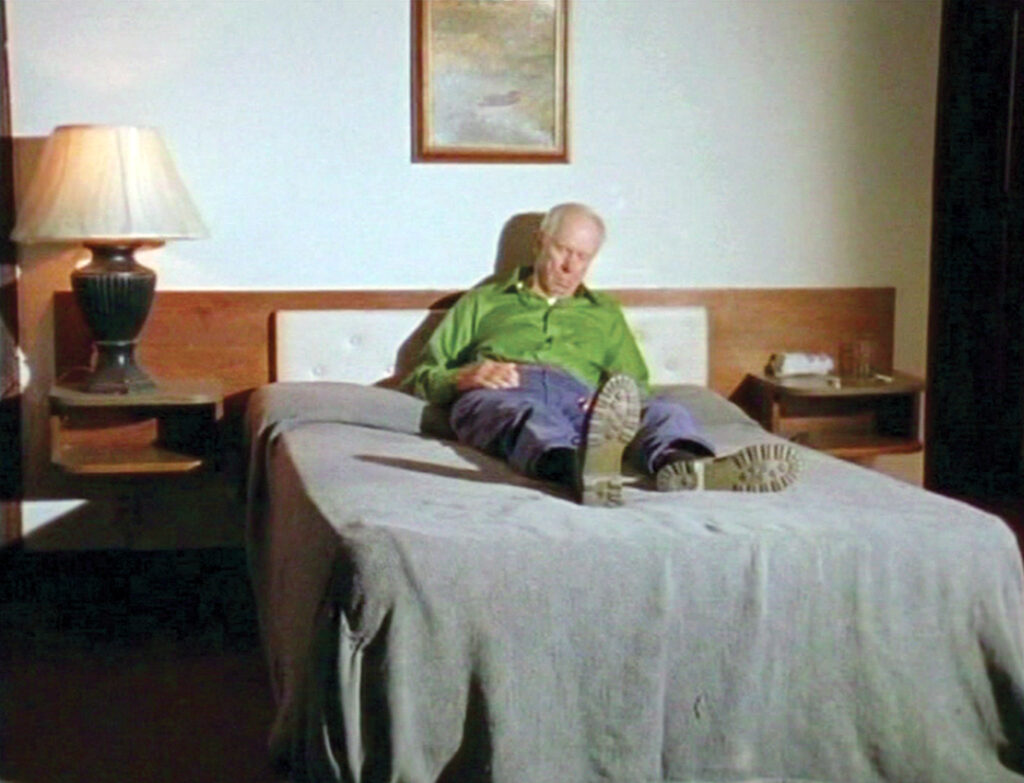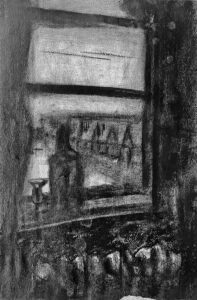Hotel Randolph
7/5/2023
Hotel Randolph Postcard. Courtesy of the Iowa Historic Museum
Gentrification is a mixed bag. In one sense, you have people we assume come with good intentions and invest in parts of our city that have been long ignored. The lack of interest would have come from back in the day when suburban life became the hot trend. People would move out of the city toward Ankeny, West Des Moines, etc. Families had the opportunity to move into new homes, and some even said they wanted to live someplace safer. When the families moved, so did the entertainment. What was left on Court Avenue in the early 1990s were a few restaurants like Spaghetti Works and the Kirkwood Café. Fourth Street consisted mostly of Java Joes, King-Ying Low Chinese Restaurant (now Fong’s Pizza), a drag bar, pawn shop, and a dirty bookstore.
On the corner of Fourth and Court sits the Hotel Randolph, and it’s been there since it was built in 1911 by H.L. Stevens & Company. It was an eight-floor hotel that would rent rooms at weekly rates where most residents were sometimes staying for months at a time. It was presumably a step up from YMCA where traveling businesspeople would stay. A wishful voice inside me was hoping the Hotel Randolph was the Chelsea for Des Moines, and that artists like Ginsberg, Patti Smith and Dylan Thomas might have stayed there. That wasn’t the case. Eventually, the hotel clientele would shift from businesspeople to the elderly and a shelter for those with mental illness.
In 1993, Jason Roe was on a road trip with friends from his home in Orange County, California, and he found himself at a rock show seeing the Iowa City-based band High and Lonesome (fronted by David Zollo) performing at Buzzard Billie’s. Roe had such a great time he told his friends he wasn’t leaving. He saw the Hotel Randolph rented rooms for $25 a night, and he told his friends goodbye. His first room was on the eighth floor. He could save money having a room without a shower, which seemed perfect — until he had to use the community bathroom for the first time. It was at the end of a long, spooky hallway like the catacombs. He chose a sponge bath at the sink.
“I had always called it the ‘Randolph Astoria,’ ” Roe said. “I painted, and I thought this would be the place I would become an artist. My room looked down onto Court Avenue. The day after that first excitement was dead. The downtown was a ghost town. I lived there for several years and had moved down to the fifth floor so I could have my own bathroom.”

Frames from “The Junky’s Christmas.” Courtesy of Kent Abbot
Roe made several paintings while he was there including one that looked down to Court Avenue from his window with the radiator and a bottle of Jägermeister sitting on the ledge.
“Eventually, I moved out after I started dating a girl who I worked with over at Kirkwood Café, and I had to pay $10 to the management if I wanted to take her up to my room,” he said.
“I never was close to anyone who lived there, but I did visit with the people who hung out at the restaurant on the bottom floor. One of them was called ‘John the Mortician.’ There had been a smell coming from one of the floors, and each day it was rising. Then, all sudden, the smell was completely gone. Someone had died, and it took a few days for someone to find them. I asked John the Mortician how they cleaned that smell out. He said there was a spray that is so regulated only morticians can get it that will cover any smell.”
Ten years later, Des Moines-based filmmaker Kent Abbot made a short film on Super 16mm called “The Junky’s Christmas” based on William S. Burroughs’ short story.
“I initially just did it as an exercise in filmmaking,” Abbot said. “I needed to find a rundown, old hotel in which to shoot the climax of the film, where the old heroin junky finds redemption by giving a teenager with appendicitis his shot of morphine instead of taking it himself. The moment I walked into the Randolph, I knew it was perfect. The peeling wallpaper, the stained carpet, the threadbare sheets. Perfect for a movie about a junkie finally getting a score. No set dressing required.”

“4th and Court” Painted by Jason Roe
Along with the actual movie being shot on Super 16mm, they also shot behind-the-scenes footage on Super 8mm. Down the road, I may share some of this online.
I absolutely eat up stories like this. By the time I was hanging out on Fourth Street, Hotel Randolph was home to many people who required housing assistance. I remember losing my wallet one night. When I retrieved it from the Des Moines Police Department, they told me one of the residents had turned it in. ♦
Kristian Day is a filmmaker and writer based in Des Moines. He also hosts the syndicated Iowa Basement Tapes radio program on 98.9 FM KFMG. Instagram: @kristianday Twitter: @kristianmday























